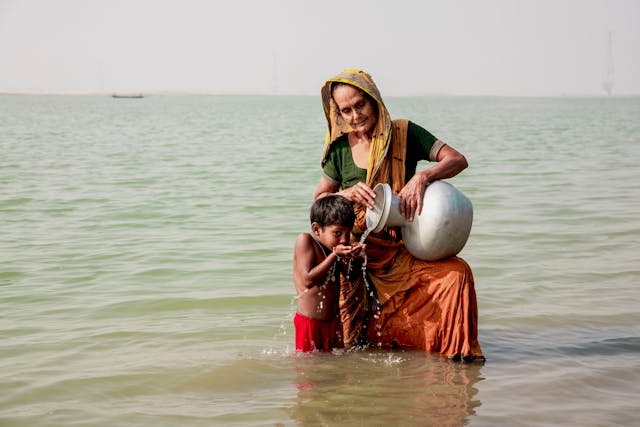Water scarcity is a pressing issue that affects millions of people worldwide, and India is no exception. With a rapidly growing population, urbanization, climate change, and unsustainable water management practices, the country faces significant challenges in ensuring adequate water availability for its citizens. Looking ahead to the year 2050, experts predict that India's water levels will face even greater strain, leading to potentially severe consequences for both the environment and society.
Current Scenario
As of the present day, India's water resources are under immense pressure. Many regions across the country already experience water scarcity, with some areas facing chronic shortages throughout the year. Factors contributing to this situation include inefficient irrigation practices in agriculture, pollution of water bodies, over-extraction of groundwater, and inadequate water infrastructure in urban areas.
Projections for 2050
By 2050, India's water levels are expected to face even greater challenges due to several key factors:
Population Growth: India's population is projected to continue growing, reaching over 1.6 billion by 2050. With more people to support, the demand for water will increase significantly, putting additional strain on existing water resources.
Climate Change: Climate change is likely to exacerbate water scarcity in India. Rising temperatures, changes in precipitation patterns, and more frequent extreme weather events such as droughts and floods will disrupt water availability and distribution across the country.
Urbanization: Rapid urbanization is placing immense pressure on water resources in India's cities. As more people migrate to urban areas, the demand for water for domestic, industrial, and commercial purposes will rise, leading to greater competition for limited water supplies.
Agricultural Demand: Agriculture is the largest consumer of water in India, accounting for around 80% of total water usage. With the need to feed a growing population, agricultural water demand is expected to increase, further straining water resources.
Consequences
The implications of dwindling water levels in India by 2050 are profound and far-reaching:
1. Water Scarcity: Many regions may face acute water scarcity, leading to disruptions in daily life, agriculture, and industry. Communities reliant on agriculture for their livelihoods may struggle to grow crops, leading to food insecurity and economic hardship.
2. Environmental Degradation: Depletion of water resources can have devastating effects on ecosystems, including loss of biodiversity, habitat destruction, and deterioration of water quality. Wetlands, rivers, and lakes may dry up, impacting aquatic life and disrupting fragile ecosystems.
3. Health Risks: Limited access to clean water can pose significant health risks, increasing the incidence of waterborne diseases such as cholera, dysentery, and typhoid. Poor sanitation and hygiene practices further compound these risks, particularly in densely populated urban areas.
Solutions:
Addressing the looming water crisis in India requires a multifaceted approach involving government policies, community engagement, and technological innovations:
1. Sustainable Water Management: Implementing sustainable water management practices, such as rainwater harvesting, watershed management, and efficient irrigation techniques, can help conserve water resources and promote resilience to climate change.
2. Water Infrastructure: Investing in robust water infrastructure, including dams, reservoirs, pipelines, and sewage treatment plants, is essential for optimizing water distribution and reducing wastage.
3. Public Awareness: Educating the public about the importance of water conservation and responsible water usage is crucial for fostering a culture of sustainability. Campaigns promoting water-saving habits at home, school, and work can help instill behavioral changes.
4. Policy Interventions: Enacting and enforcing water-related policies and regulations at the national, state, and local levels can help govern water usage, protect water sources, and ensure equitable access to water for all segments of society.
Conclusion:
The future of India's water levels hangs in the balance, with the specter of water scarcity looming large. However, by taking proactive measures to conserve and manage water resources effectively, India can mitigate the impacts of the impending crisis and secure a sustainable water future for generations to come. Collaboration between government, communities, and stakeholders will be paramount in addressing this complex challenge and safeguarding India's most precious resource – water.





2 Comments
John Doe
Posted on: March 13, 2025Leverage agile frameworks to provide a robust synopsis for high level overviews. Iterative approaches to corporate strategy foster collaborative thinking to further the overall value proposition.
John Doe
Posted on: March 13, 2025Leverage agile frameworks to provide a robust synopsis for high level overviews. Iterative approaches